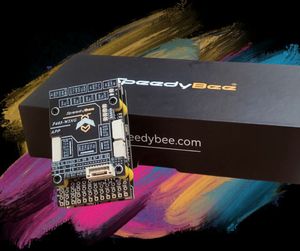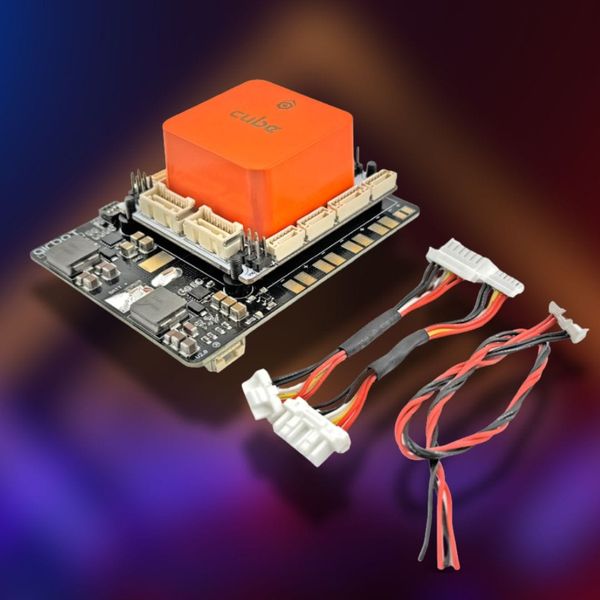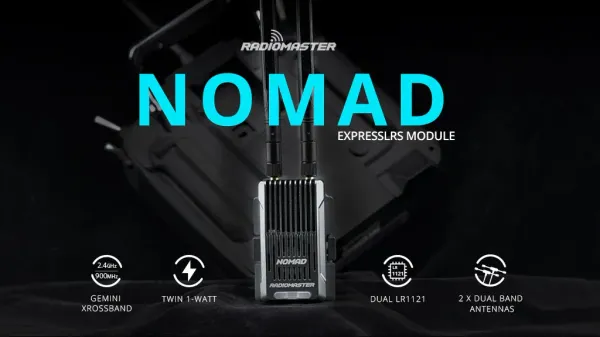TL;DR: Are you a drone enthusiast looking for an exciting FPV experience? Look no further! In this article, we dive deep into the Whoop Fly 16, an inverted Tiny Whoop style micro racer packed with powerful features. We'll go over its unique design, impressive performance, and the occasional quirks you might encounter. Keep reading to learn all about this drone and how it could elevate your FPV game!
Introduction: Meet the Whoop Fly 16
The Whoop Fly 16 from Sub 250 is the latest inverted Tiny Whoop style micro racer that boasts powerful performance and a unique design. With the same parts as the last Sub 250 drone, the NanoFly 20, the Whoop Fly 16 features 1.6-inch Gemfan props, 1002 motors, and a pusher setup that provides improved airflow.

Flight Controller and Firmware
The Whoop Fly 16 is equipped with a powerful F411 all-in-one flight controller, which comes with a built-in SPI receiver for Express LRS. Sub 250 is committed to keeping their flight controllers updated with the latest firmware, ensuring that you always have access to cutting-edge features and optimal performance.
FC Specifications
- Flight control system: Redfox A1 F4 5A 4in1 1S AIO FC
- MCU: STMF411
- IMU: ICM42688-P
- OSD: BetaFlight OSD w/AT7456E chip
- ESC: Redfox A1 4IN1 5A ESC
- VTX: VTX 5.8G 200mW (included on the Analog version)

The flight controller's MCU (Microcontroller Unit) is an STMF411, which ensures smooth and efficient processing of data. The IMU (Inertial Measurement Unit) is an ICM42688-P, which accurately measures the drone's orientation and motion. The on-screen display (OSD) features a BetaFlight OSD with AT7456E chip (for the analog version), providing you with real-time flight information right on your goggles or screen.
Accessories and Battery
The Whoop Fly 16 comes with various foam bumpers for its prop guards, as well as spare Gemfan 40mm propellers. It uses a GNB 27 connector and is powered by a 530mAh 1S battery. The battery tray is designed specifically for these batteries, ensuring a snug fit.

Weight and Flight Performance
The Whoop Fly 16 weighs about 42.5 grams without the battery and 55.3 grams with the 1S 530mAh battery. It delivers a smooth flight experience with a factory pit tune, allowing for excellent control and fast straight-line flying. However, being a 1S drone, it doesn't have the power needed for complex acrobatics.
Battery Management and Voltage
One crucial aspect to note is that the Whoop Fly 16 will fall out of the sky when the battery reaches a certain voltage (around 3.1V). It's essential to pay attention to your battery voltage and timer to avoid unexpected crashes. The voltage remains stable throughout most of the flight but drops off rapidly towards the end.
Canopy Design and Cooling
The Whoop Fly 16's canopy design allows for some airflow and heat dissipation. However, users may still encounter VTX overheating warnings when flying slowly indoors or in hot conditions. To avoid this issue, it may be helpful to modify the canopy for improved airflow and additional cooling vents.

Walksnail VTX Design Concerns
The Walksnail VTX system on the Whoop Fly 16 has raised a few concerns among users, particularly regarding the accessibility of its USB connector. The current frame and cover design appears to have been developed before the decision to incorporate a Walksnail version, resulting in the USB connector being covered and difficult to access.

This design oversight is inconvenient for users, as the USB connector is necessary not only for occasional firmware updates but also for accessing video recordings from the onboard DVR. The Walksnail system's onboard DVR is a valuable feature for tiny whoops, as it offers somewhat better video quality compared to goggle recordings and eliminates the need for an external HD camera, which can add unwanted weight to the drone.
In light of this issue, some users may resort to cutting holes in the cover to access the USB connector more easily, avoiding the need to disassemble the drone every time they wish to retrieve their recordings or update the firmware. To address this concern, future iterations of the Whoop Fly 16 could benefit from a design that allows for more convenient access to the Walksnail VTX USB connector.

Community Feedback and Impressions
The Whoop Fly 16 has garnered a positive response from the drone community, with users commending its flying capabilities, durability, and available HD options. Many have compared it to similar models, such as the GEPRC P16/Tiny Go, but note that the Whoop Fly 16 offers a more refined pusher configuration and an overall improved design.
One area of improvement suggested by users is the canopy design, specifically the inclusion of holes or slots to allow for easier camera adjustments. Additionally, some users have expressed concern about the drone's weight, suggesting that it might be slightly heavier than other similar models.
A few users have also inquired about potential compatibility with 2S batteries and whether the HD Zero Whoop VTX might have low voltage issues. Moreover, the drone's price point has been mentioned as a potential barrier for some prospective buyers.
In summary, the Whoop Fly 16 has been well-received by the community, with positive feedback highlighting its performance, design, and HD options. Nevertheless, users have pointed out some areas that could be improved, such as the canopy design, weight, and potential issues with the HD Zero Whoop VTX.
Conclusion: Is the Whoop Fly 16 Worth It?
The Walksnail VTX system on the Whoop Fly 16 has raised a few concerns among users, particularly regarding the accessibility of its USB connector. The current frame and cover design appears to have been developed before the decision to incorporate a Walksnail version, resulting in the USB connector being covered and difficult to access.
This design oversight is inconvenient for users, as the USB connector is necessary not only for occasional firmware updates but also for accessing video recordings from the onboard DVR. The Walksnail system's onboard DVR is a valuable feature for tiny whoops, as it offers somewhat better video quality compared to goggle recordings and eliminates the need for an external HD camera, which can add unwanted weight to the drone.
In light of this issue, some users may resort to cutting holes in the cover to access the USB connector more easily, avoiding the need to disassemble the drone every time they wish to retrieve their recordings or update the firmware. To address this concern, future iterations of the Whoop Fly 16 could benefit from a design that allows for more convenient access to the Walksnail VTX USB connector.







